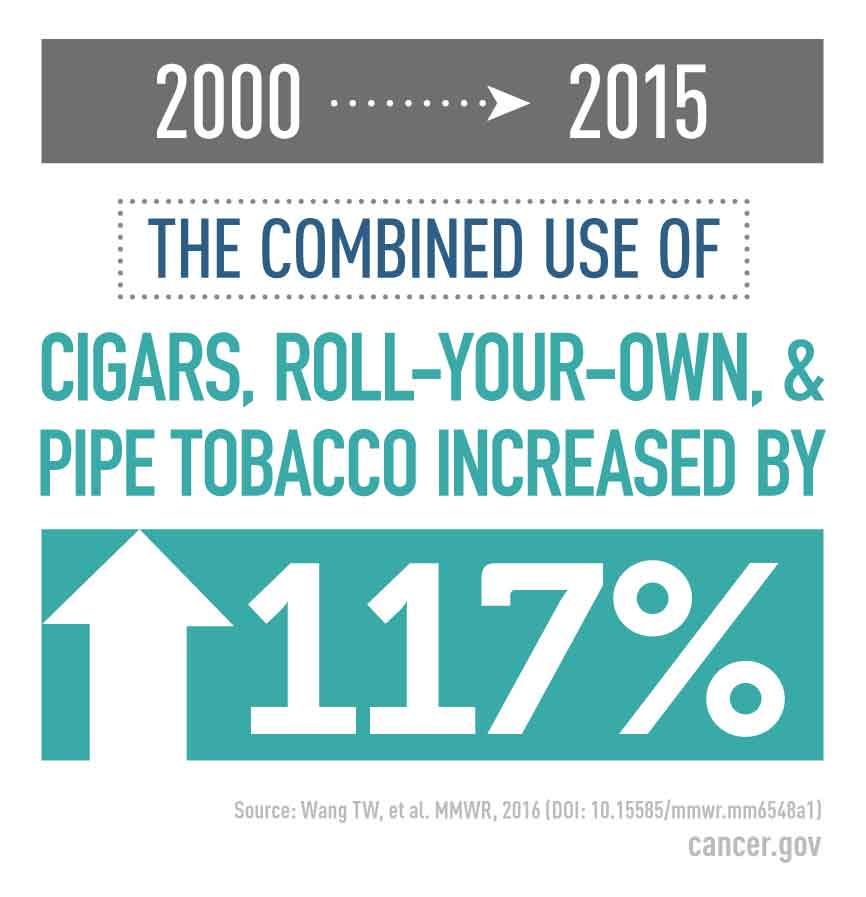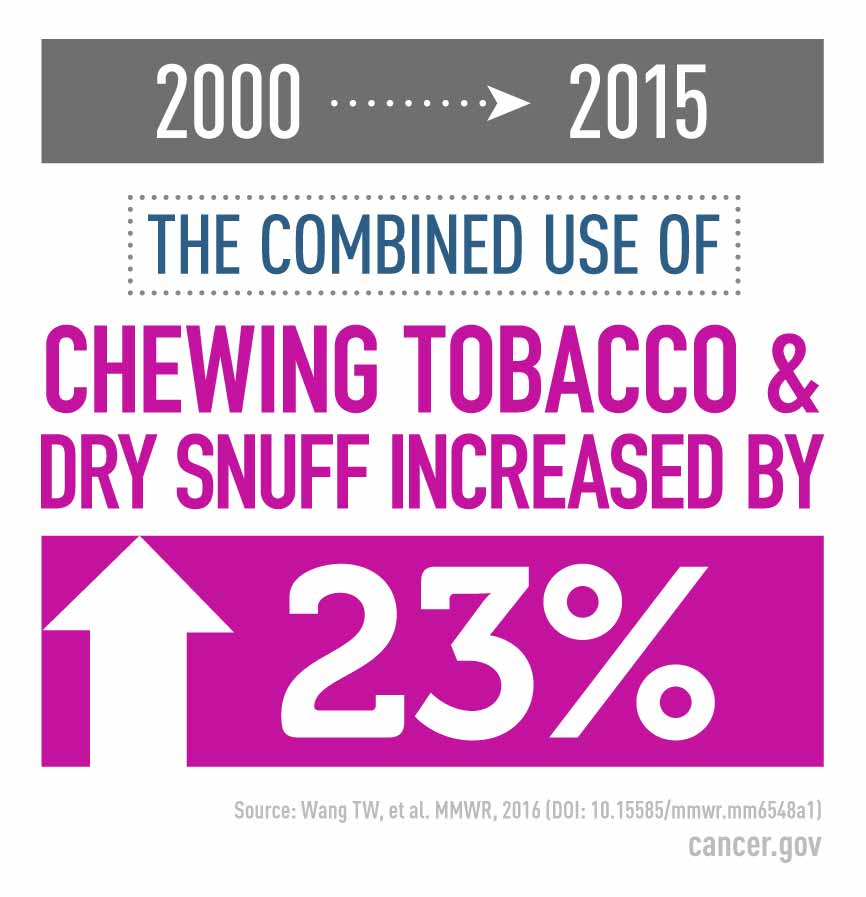
01/23/2017 | |
The consumption of cigarettes, small cigars, and chewing tobacco has declined over the past 15 years, according to a new study. These declines were partially offset by a rise in consumption of large cigars, pipe tobacco, and snuff. | |
Shifts Seen in Tobacco Product Types Purchased in US
January 23, 2017, by NCI Staff
The consumption of cigarettes, small cigars, and chewing tobacco in the United States has declined over the past 15 years, according to a new analysis from researchers at the Centers for Disease Control and Prevention(CDC).
These declines were partially offset, however, by a rise in consumption of large cigars, pipe tobacco, and snuff. But despite these changes, the researchers found that cigarettes still remain the most commonly consumed tobacco product by far.
“Notable shifts have occurred in the tobacco product landscape,” the study authors wrote.
These shifts may be influenced by several factors, including changes in product pricing and marketing, as well as alterations in social norms, explained Michele Bloch, M.D., Ph.D., chief of NCI’s Tobacco Control Research Branch, who was not involved in the study. Analyses of tobacco consumption trends are crucial to identifying research priorities and informing public health strategies in the future, she said.
“This report highlights the importance of continuing to monitor and reduce all forms of smoked and smokeless tobacco use in the U.S.,” said the study’s first author Teresa Wang, Ph.D.
The new analysis was published December 9 in Morbidity and Mortality Weekly Report.
A Changing Landscape
Tobacco use is the leading preventable cause of death and disease in the United States, and public health policies have been implemented to help eliminate both tobacco use and exposure to secondhand smoke.
Tobacco smoking causes lung cancer and many other cancers, including those of the bladder, liver, and pancreas. In addition, tobacco smoking can cause or exacerbate other diseases such as heart disease, lung disease, and diabetes.
Smokeless tobacco products, such as chewing tobacco and snuff, can also cause serious detrimental health effects and lead to diseases, including cancer.
Tobacco use trends are studied to help develop public health policies and interventions. Because most tobacco products are taxed, trends in the type of tobacco products Americans purchase—that is, tobacco consumption—can be inferred from federal excise tax data.
To keep a pulse on the types of tobacco products Americans are using, the CDC regularly analyzes trends in tobacco product consumption over time. For this report on tobacco consumption, the research team estimated total and per person consumption of tobacco between 2000 and 2015. And for the first time, they analyzed consumption of smokeless tobacco products in addition to smoked tobacco products.
During this time period, total consumption of all smoked tobacco products combined dropped by 33.5%, the CDC investigators reported. Although total consumption of cigarettes fell by nearly 40%, total consumption of all other smoked tobacco products combined rose by approximately 117%. This increase was driven by a substantial rise in the consumption of large cigars and pipe tobacco, they found. In contrast, consumption of small cigars and roll-your-own tobacco decreased.
They also found that, between 2000 and 2015, a decline in chewing tobacco consumption was offset by a steady increase in snuff consumption.
“We think one reason for this trend is that tobacco companies spent much more on advertising snuff versus chewing tobacco,” said Dr. Wang. For example, in 2013, tobacco companies spent almost $411 million on snuff advertisements, compared with just under $12 million for chewing tobacco advertisements, she explained.
Trends in per person consumption of smoked and smokeless tobacco between 2000 and 2015 were similar to those for total consumption.
When the research team focused on changes in tobacco consumption that occurred between 2014 and 2015, however, they found that some trends differed from those that occurred between 2000 and 2015. For example, from 2014 to 2015, total and per person cigarette consumption increased slightly, although both total and per person consumption of all other smoked tobacco products combined fell.
This was the first time since 1973 that more cigarettes were consumed than in the previous year, the authors noted.
“The exact cause of this increase is unknown, but one possibility is that improvements in the US economy may have meant that smokers had more money to spend on cigarettes,” Dr. Wang said. "We will continue to monitor cigarette consumption to determine if this is a blip in time or an actual trend.”
Public Health Impact
The authors noted that their study was not without limitations: Consumption estimates based on tax data excludes illegal tobacco sales, sales on American Indian sovereign lands, and sales of certain tobacco products for which taxes are not reported. In addition, they wrote, “sales data might not reflect actual consumption, because all purchased products might not be used by the consumer because of loss, damage, or tobacco cessation.”
And because per person estimates of tobacco consumption are not exact, the authors point out that an upward trend in tobacco consumption does not necessarily mean that more Americans are using tobacco products.
Overall, these results show that “cigarettes remain our biggest problem, but not our only problem,” said Dr. Bloch. Although cigarette consumption has steadily decreased over the past 15 years, Americans continue to consume several million more cigarettes than equivalents of any other tobacco product, she explained.
“By using proven strategies to address the diversity of tobacco products consumed, we can continue to reduce tobacco-related disease and death,” Dr. Wang said.
























.png)












No hay comentarios:
Publicar un comentario